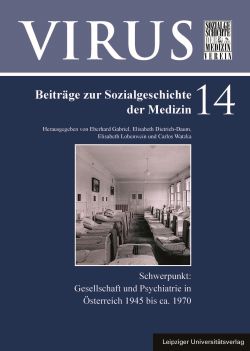
VIRUS Band 14, pp. 207-220, 2020/07/23
Schwerpunkt: Gesellschaft und Psychiatrie in Österreich 1945 bis ca. 1970

As an example of how scientific societies dealt with the Nazi-past of some of their members, an overview is given on how the Vienna Psychoanalytic Society (WPV) resumed its workin the years after 1945. The Society was diminished to a handful of members, the generalacceptance of psychoanalysis was poor and the psychoanalytic society’s policy towards former Nazi party members mirrors the general Austrian policy towards its Nazi-past.Several outreach activities were initiated after 1946. The ambivalent reception of psychoanalysis in post-war Austria and the general brain-drain made a hard beginning for the Vienna Psychoanalytic Society after liberation. The identity of the Viennese psychoanalysts after the war was formed by Austrian and personal history.
Keywords: Psychoanalysis in Vienna, ambivalence towards Freud, Vienna Psychoanalytic Society, psychoanalytic identity today, screen identity, outreach activities